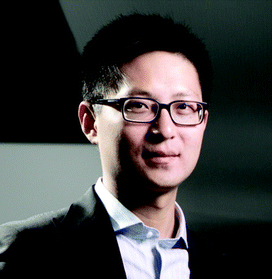Materials Horizons Emerging Investigator Series: Li Tang, École polytechnique fédérale de Lausanne (EPFL), Switzerland
Li Tang is an Assistant Professor of Bioengineering, and Materials Science & Engineering, and the Director of the Laboratory of Biomaterials for Immunoengineering at École polytechnique fédérale de Lausanne (EPFL). Li Tang received his BS in Chemistry from Peking University in China in 2007, and his PhD in Materials Science and Engineering from University of Illinois at Urbana-Champaign, USA, in 2012, under the supervision of Prof. Jianjun Cheng. He was an Irvington Postdoctoral Fellow in the laboratory of Prof. Darrell Irvine at Massachusetts Institute of Technology before he joined EPFL in 2016. His research focuses on immunoengineering through multi-dimensional approaches, which include methods of chemical, metabolic, and mechanical engineering, with the goal to create new immunotherapies against cancer and infectious diseases. Dr Tang appears on MIT Technology Review's “Top 35 Innovators under Age 35” list for the China region (2020), is a Biomaterials Science Emerging Investigator (2019), and is a recipient of a European Research Council (ERC) starting grant (2018), a Nano Research Young Innovator Award (NR 45 under 45 in the world) (2018), and an Irvington Postdoctoral Fellowship from the Cancer Research Institute (2013).
Read Li Tang's Emerging Investigator Series article ‘‘T cell force-responsive delivery of anticancer drugs using mesoporous silica microparticles” and read more about him in the interview below:
MH: Your recent Materials Horizons Communication reports a T cell force-responsive delivery system for anticancer drugs. How has your research evolved from your first article to this most recent article and where do you see your research going in future?
LT: My research focuses on engineering immune–disease interactions in order to develop safe and effective immunotherapies against cancer. So far, research in this field, including ours, has focused predominantly on regulating the biochemical traits of immune cells or their surrounding biochemical microenvironment. On the other hand, biomechanical cues, which represent another major dimension of the relationship between immune cells and their environment, have been largely underappreciated.
Our growing knowledge of mechano-immunology has motivated me to exploit biomechanical cues in addition to biochemical ones to achieve controlled modulation of immunity for therapeutic applications, a nascent field that we termed “mechanical immunoengineering”. This communication in Materials Horizons reports our first attempt to explore cellular forces as a rapid and specific trigger for responsive drug delivery. We envision that mechanical immunoengineering will develop into an important methodology that is complementary to current biochemical immunoengineering, and ultimately improve the therapeutic outcomes of immunotherapies. In our future research, we will continue to employ multi-dimensional approaches in immunoengineering.
MH: What aspect of your work are you most excited about at the moment?
LT: We are extremely excited about the enormous opportunity in utilizing biomechanical cues to precisely modulate immune responses for therapeutic applications. The field has accumulated tremendous fundamental knowledge in mechano-immunology while its translational study in immunotherapy is still in its infancy. Great opportunities and challenges are faced in the field of mechanical immunoengineering.
MH: In your opinion, what are the most important questions to be asked/answered in this field of research?
LT: Cancer immunotherapies have achieved dramatic clinical success and saved many patients’ lives. However, only a small fraction of patients show curative responses. The key questions to be answered in the broader field of cancer immunotherapy are why the majority of cancer patients do not respond to current immunotherapies, and how to improve the patient response rate by developing the next generation of immunotherapies that integrate our knowledge of cancer immunology and bioengineering approaches.
MH: What do you find most challenging about your research?
LT: Clinical translation is the most challenging step in my research due to various reasons. Many brilliant approaches are developed in laboratories but may have a hard time demonstrating any value in clinical applications. Luckily, a nanogel-backpacking T cell therapy we developed is currently being tested in clinical trials. We are learning from the experience and lessons, and aim to develop new technologies and therapies with translational impact.
MH: At which upcoming conferences or events may our readers meet you?
LT: I often go to meetings such as Gordon Research Conferences, CRI-CIMT-EATI-AACR International Cancer Immunotherapy Conferences, BMES annual meetings, MRS meetings, and so on.
MH: How do you spend your spare time?
LT: In my spare time, I can be found hiking or skiing in the Alps with my family.
MH: Can you share one piece of career-related advice or wisdom with other early career scientists?
LT: Identify the important and relevant questions. Be bold and work on the high-risk high-gain projects!
| This journal is © The Royal Society of Chemistry 2020 |

